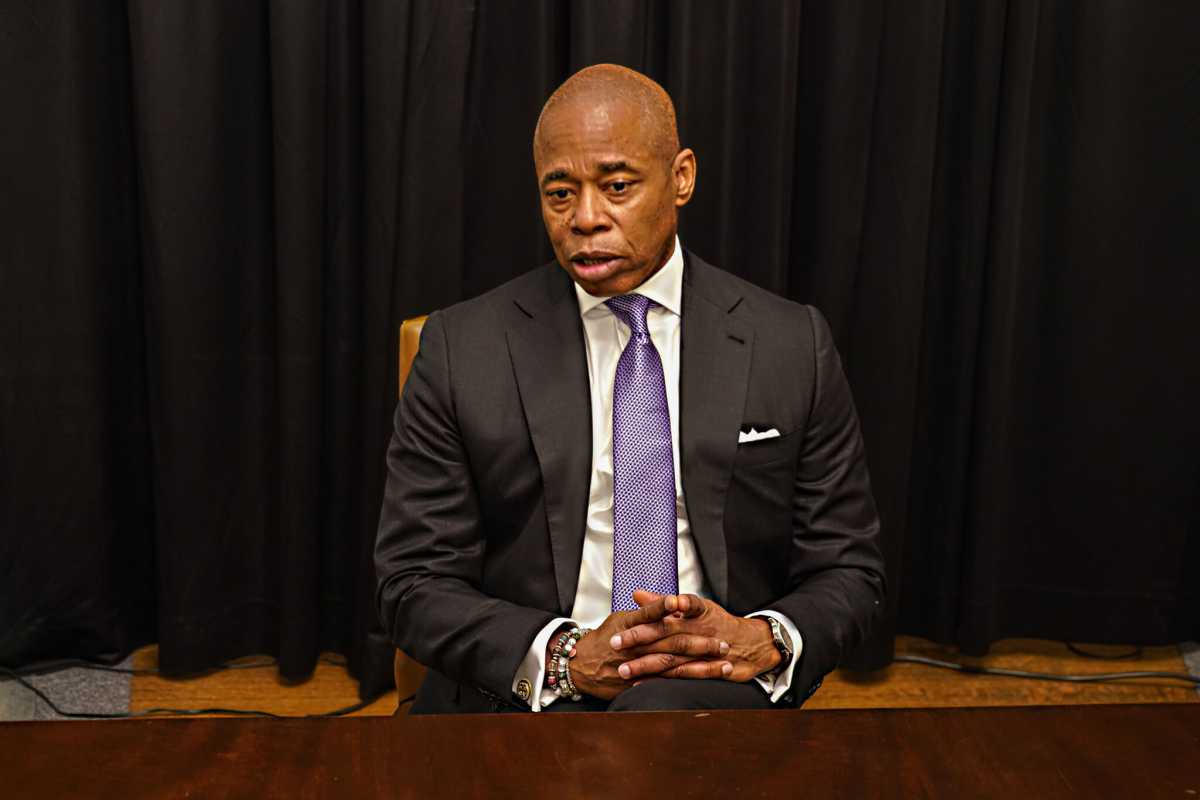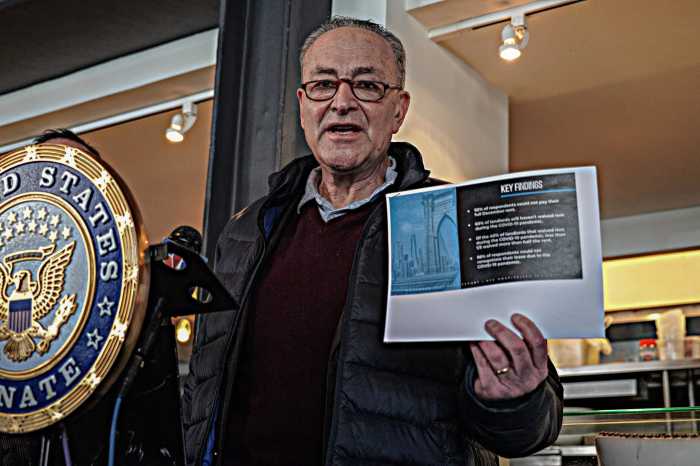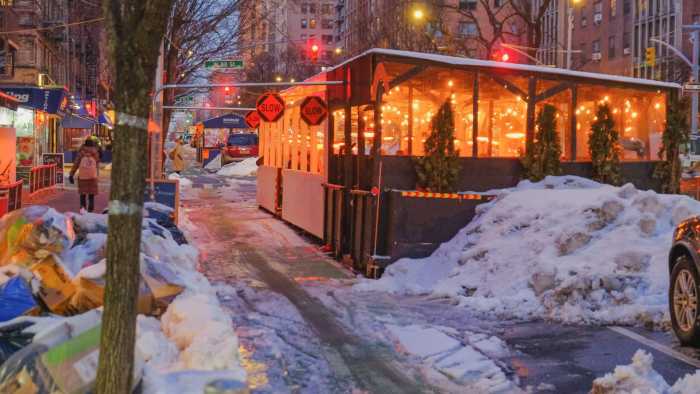It’s been nearly one year since Eric Adams first walked into City Hall as the Big Apple’s new mayor, and in the 12 ensuing months he has had to contend with a barrage of crises, while simultaneously working to establish his administration and lay out his vision for the city.
Some of the challenges Hizzoner has had to contend with during his first year in office include: a wave of high profile crimes on the city’s streets and in the subways, an economy devastated by the COVID-19 pandemic, a staggering housing crisis and over 31,000 asylum seeking migrants who’ve been arriving in the city since April.
In a sit-down interview with amNewYork Metro, Adams discussed how he tackled these myriad issues.
In year one of his administration, the mayor has also drawn a great deal of attention for his penchant for staying out late at exclusive nightclubs like Zero Bond in NoHo, where he often rubs elbows with big name celebrities, and for taking meals at the high end Midtown Manhattan eatery, Osteria La Baia.
Adams’ first year has also seen staffing shakeups at the highest ranks of his administration. His chief of staff, Frank Carone, and first deputy, Lorraine Grillo, are both stepping down at the start of the new year – to be replaced by Camille Joseph Varlack and current Deputy Mayor for Strategic Initiatives Sheena Wright, respectively. And his buildings commissioner Eric Ulrich resigned after it was revealed he was ensnared in an ongoing illegal gambling probe by the Manhattan District Attorney’s office.
Crime
Adams, a former police captain, was elected on the promise that he would get the city’s crime rate under control. And, by the end of his first year, he has made real progress with lowering shootings and murders, with a 17% percent decrease in the former and a 12% drop in the latter compared to this time last year.
But the major crimes category overall – which, in addition to murder, includes heinous offenses like rape, felony assault and grand larceny – rose by 23% over last year’s numbers, according to NYPD data. That increase was fueled by a nearly 32% rise in car thefts, a 26% increase in grand larcenies and an almost 26% jump in robberies.
Adams, attributed the high major crime numbers – particularly grand larceny – to those who’ve been repeatedly arrested for the crimes but are then released, because of the state’s more lenient bail laws, who then commit the crimes again. Additionally, the mayor said, while major crime numbers are higher than he’d like them to be, they’re about 20% lower than soon after when he took office.
“We’re still 20 something percent up in some of the majors, particularly grand larceny, which is a real problem, which the number of repeated offenders – the people who are arrested repeatedly for grand larceny – some of them are 30 to 40 times that arrested over and over again and allowed to come back down and do it again,” Adams said. “But remember what happened in February? We were 40% up in February. Now we’re trending way down at 20%. And you’re seeing the fruits of the seeds we planted, you’re seeing the harvest of what we have done.”
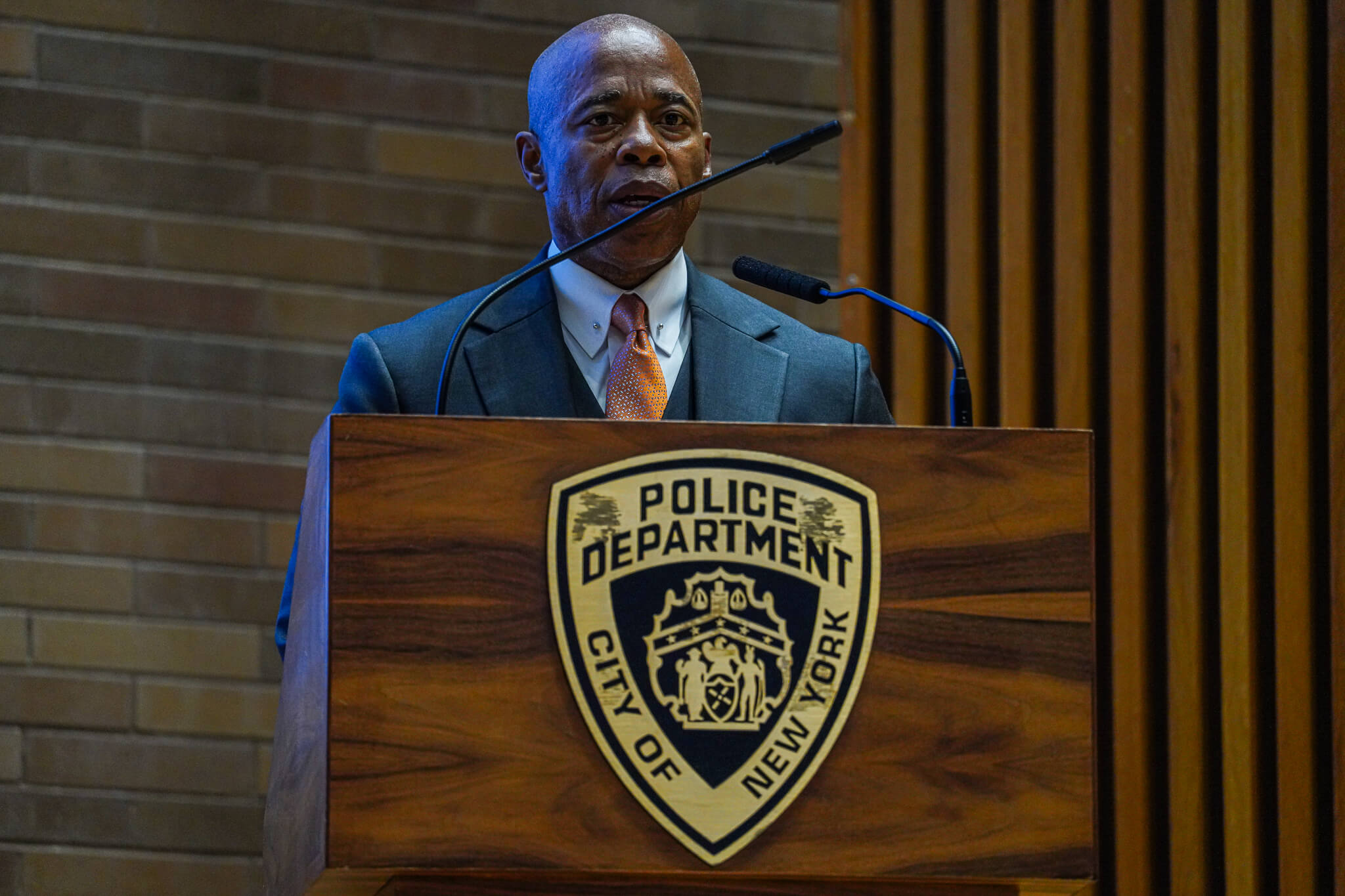
That drop, the mayor said, can in-part be attributed to his decision to revive an anti-gun unit that was disbanded by his predecessor Bill de Blasio following the murder of George Floyd at the hands of a Minneapolis police officer in 2020. He says the unit helped take 7,000 guns off the streets this year.
To address crime and other issues, Adams has introduced a variety of plans and initiatives, which have all received their fair share of criticism and praise.
Basil Smikle, director of the Public Policy Program at Hunter College, said Adams’ record on crime over his first year has been mixed.
“But I do think there has been progress toward greater reductions in crime that he can count,” Smikle said in an interview. “I sometimes think that the messaging on [crime] is not as clear as it could be, to give the voters a little more assurance that he’s got a broader sort of planning and strategy in place.”
As part of his crime agenda, the mayor also spent his first few months in office lobbying Albany lawmakers to roll back criminal justice reforms passed at the state level in recent years – most notably 2019 reforms that eliminated cash bail for most misdemeanors and non-violent felonies. He won some changes championed by Hochul in state budget negotiations, allowing judges to consider crimes involving firearms and repeat offenders when setting bail, but lost on the so-called “dangerousness standard” he had pushed for.
However, the mayor – who served in Albany as a state Senator for several years – insists that, short of the dangerousness standard, he achieved many of his legislative priorities in the state capitol this year. That includes passing the New York City Housing Authority (NYCHA) “Preservation Trust,” extending mayoral control of city schools for another two years and increasing the city’s earned income tax credit.
“Eric did not get what I felt was dangerousness, that’s the only thing people can point to in Albany and say that we did not get it,” the mayor said, referring to himself. “I worked in Albany for seven years, you don’t walk away from Albany with everything you want. I had a successful run in Albany last year.”
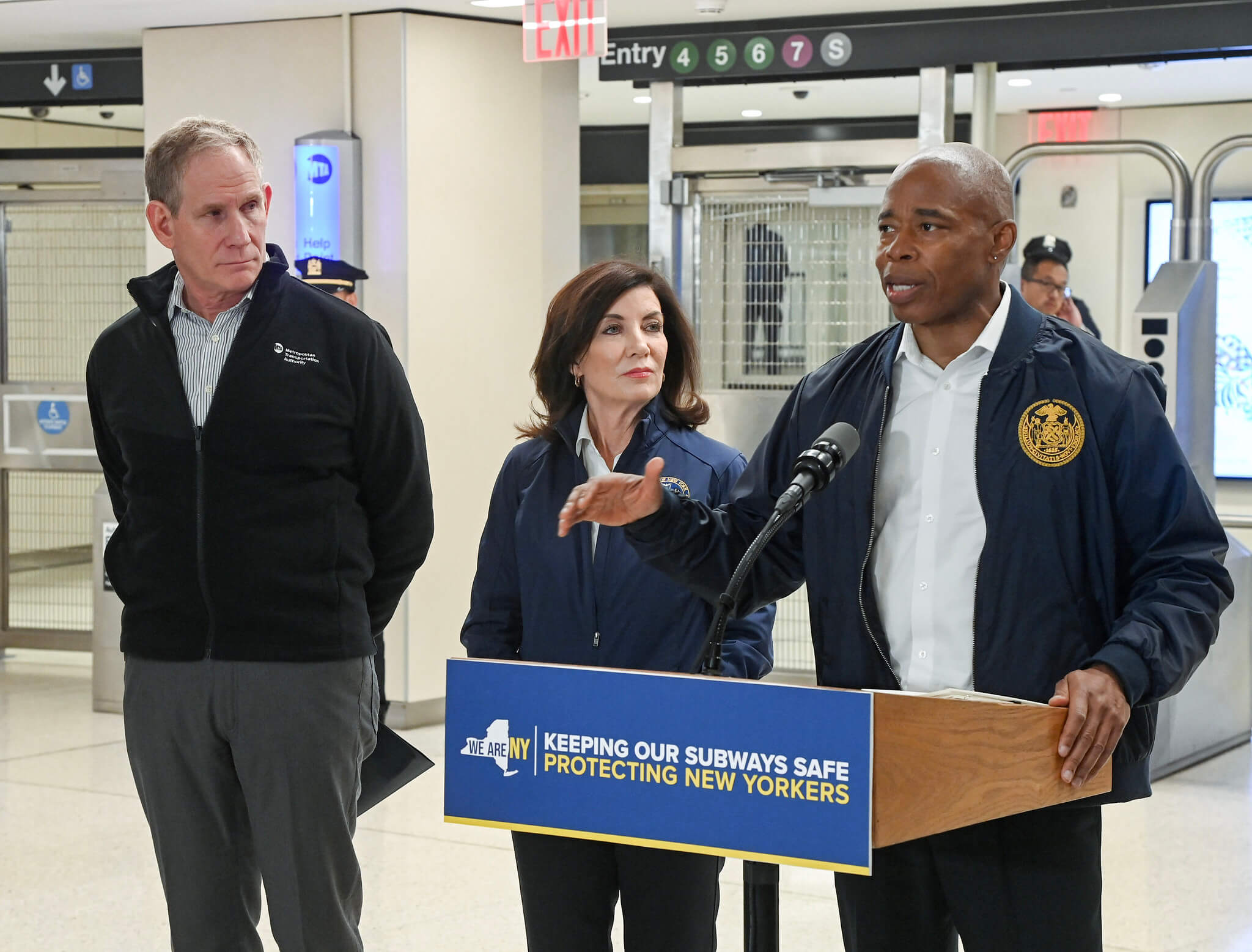
Smikle said Adams’ crime agenda has benefited from his mostly good relationship with Governor Kathy Hochul, who is also a moderate Democrat. That stands in stark contrast to the total lack of cooperation between Adams’ and Hochul’s predecessors: de Blasio and Andrew Cuomo.
“The mayor and the governor, both have these concerns about crime and the role that the state legislature can play in tightening certain aspects of bail reform that may help reduce crime,” Smikle said. “And because of that shared vision, I think he has a very different path forward than say, de Blasio and Cuomo, if they were dealing with a similar issue.”
Political consultant Hank Sheinkopf agreed the mayor’s ability to work with the governor is advantageous to his crime agenda. And, when it comes to the state legislature, he said disagreements between New York City mayors and Albany lawmakers is hardly a new phenomenon.
“The legislature and the mayor have always been contentious, historically,” Sheinkopf said. “So it’s not surprising that he did not get the dangerousness standard. And it won’t be surprising if he doesn’t get the bail reform he wants.”
The economy
The mayor has also placed great emphasis on reinvigorating the city’s economy after the COVID-19 pandemic left it in shambles – another area where he’s seen mixed results.
According to an annual report on the Big Apple’s economy from city Comptroller Brad Lander, the city has recovered 97.2% of its pre-pandemic private-sector jobs. But that’s still about 115,000 jobs short of where the city was in February 2020, James Parrott – Director of Economic and Fiscal Policy at the New School’s Center for New York City Affairs – told amNewYork Metro.
That stands in contrast to the nation at large, Parrott said, which recovered all of the jobs lost during the pandemic and even gained some.
“And most large states, either their pandemic jobs deficit is smaller than New York State’s, or they’ve gained jobs even more than the nation overall. So, New York state clearly was hit the hardest,” Parrott said. “New York City was hit the hardest among the largest cities.”
The city’s unemployment rate has also dropped significantly since the darkest days of the pandemic, according to Lander’s report. As of this past October, it was at nearly 6%, compared to May 2020, when it hit a peak of 21%.
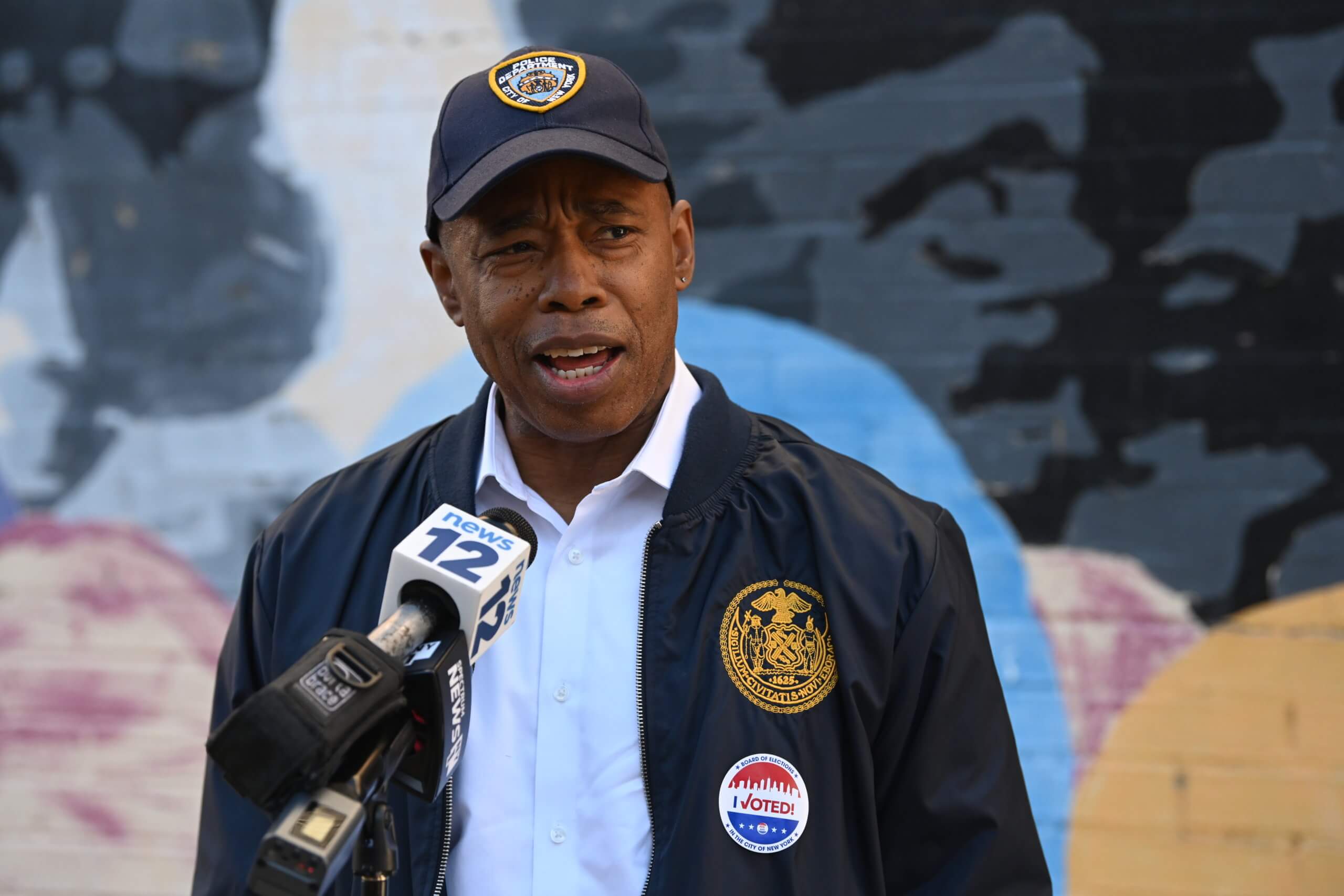
When it comes to Adams’ economic policies, Parrott applauded the mayor’s successful effort pushing the state legislature to increase the city’s Earned Income Tax Credit by $250 million.
“Previously, the city had been spending about $100 million a year on the Earned Income Tax Credit,” Parrott said. “Mayor Adams increased it by $250 million. So that’s a pretty remarkable increase. So, that clearly is something that will help the economic situation of a lot of low income families.”
Adams has often highlighted the rebound of the city’s tourism sector, which has made a strong recovery since the winter of 2019, as a barometer of its economic recovery overall. He told amNewYork Metro the city has had 56 million visitors this year, which he said is a 70% jump from last year’s numbers. And, he added, the city is expected to host 60 million tourists in 2023.
NYC Hospitality Alliance Executive Director Andrew Rigie said that while his sector has come roaring back over the past year, there’s still much work to be done.
“There’s people visiting from around the globe, speaking every language, dining out at restaurants, going out to bars,” Rigie said. “You see them in Midtown and lower Manhattan and other neighborhoods. So it’s a much better place than we were, but we are going to need ongoing investment from the Adams administration to make sure that we get people back to New York City for the holidays, for conventions, for everyday tourism.”
Adams is also looking towards how to adapt the city’s economy for the world after COVID-19. To that end, earlier this month, the New New York panel, which Adams and Hochul convened in May, released “New’ New York: Making New York Work for Everyone” – a 150-page report containing 40 proposals for reconstructing the city’s economy post-pandemic.
The plan is built around three central pillars: transforming business districts into round-the-clock areas; improving public transportation into Manhattan and building out business hubs in the outer-boroughs and growing the city’s economy by bringing more jobs here.
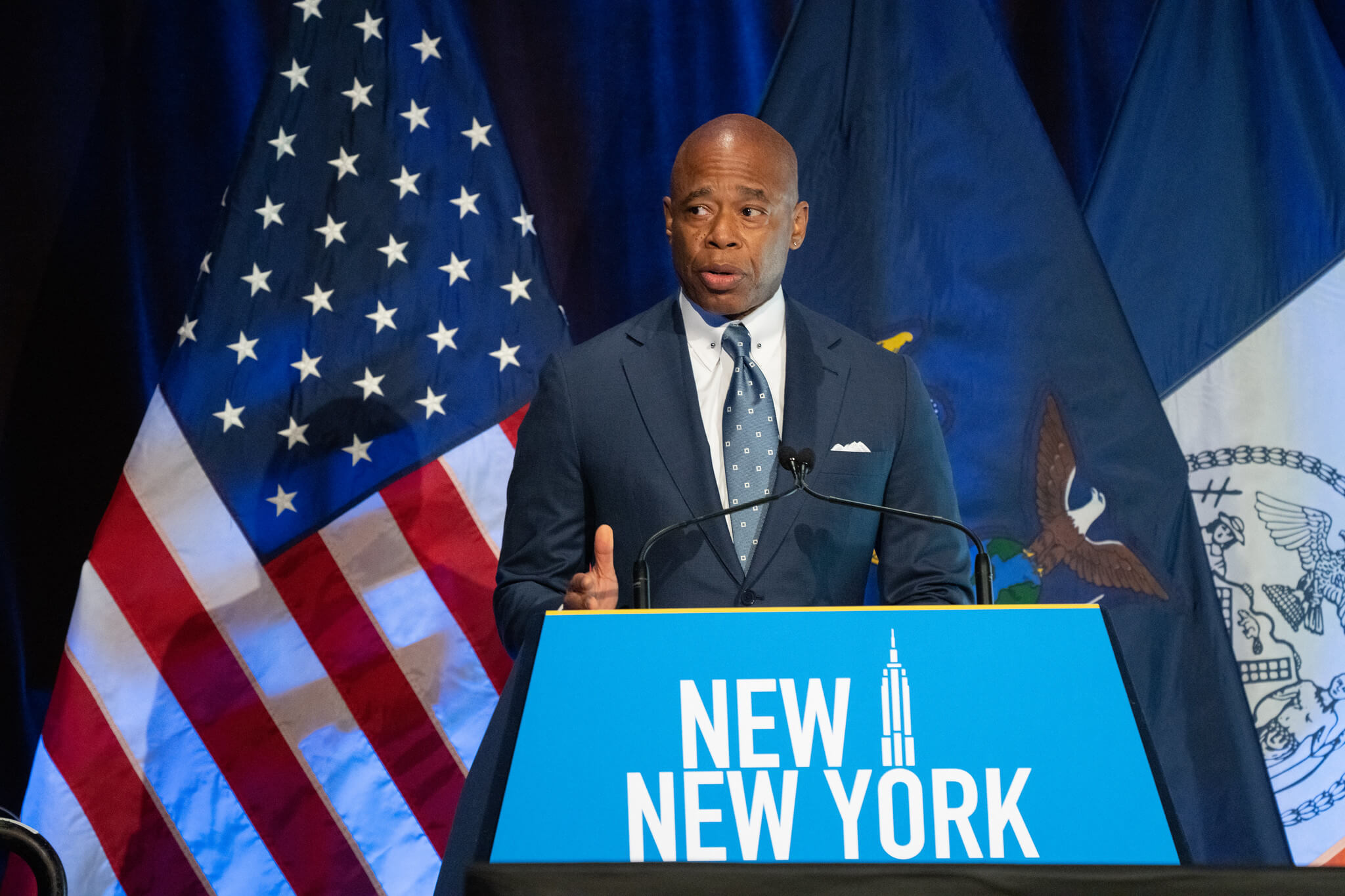
A major piece of transforming Midtown and other central business districts laid out in the report, is converting office buildings into housing
“How about doing what other countries are doing, where we take our office buildings, build out studios inside those office buildings, share kitchen areas, share boardrooms, share workspaces?” Adams said. “We have to think differently, because the world we knew pre-COVID is not the world we know post-COVID. And that is the boldness of what we want to do.”
Housing
When it comes to addressing the city’s lack of affordable housing, the mayor – over the course of his first year – has championed building as many units as possible by saying “yes” to big developments and cutting down on city bureaucracy that he says often slows down the pace of construction.
The city is experiencing a massive affordable housing shortage, with demand outpacing supply, which is causing prices for available apartments to soar – the median price of a Manhattan rental apartment reached $4,000 in August, according to a published report.
Recently, the mayor unveiled “Get Stuff Built,” a package of over 100 reforms intended to cut red tape and make building new housing in the city easier and faster. Adams declared, while unveiling the plan, that if all 111 proposals in its pages are enacted, housing project timelines will be cut by 50%, which would result in the construction of 50,000 new units over the next decade.
He also set an ambitious “moonshot” goal of building 500,000 units over the next 10 years.
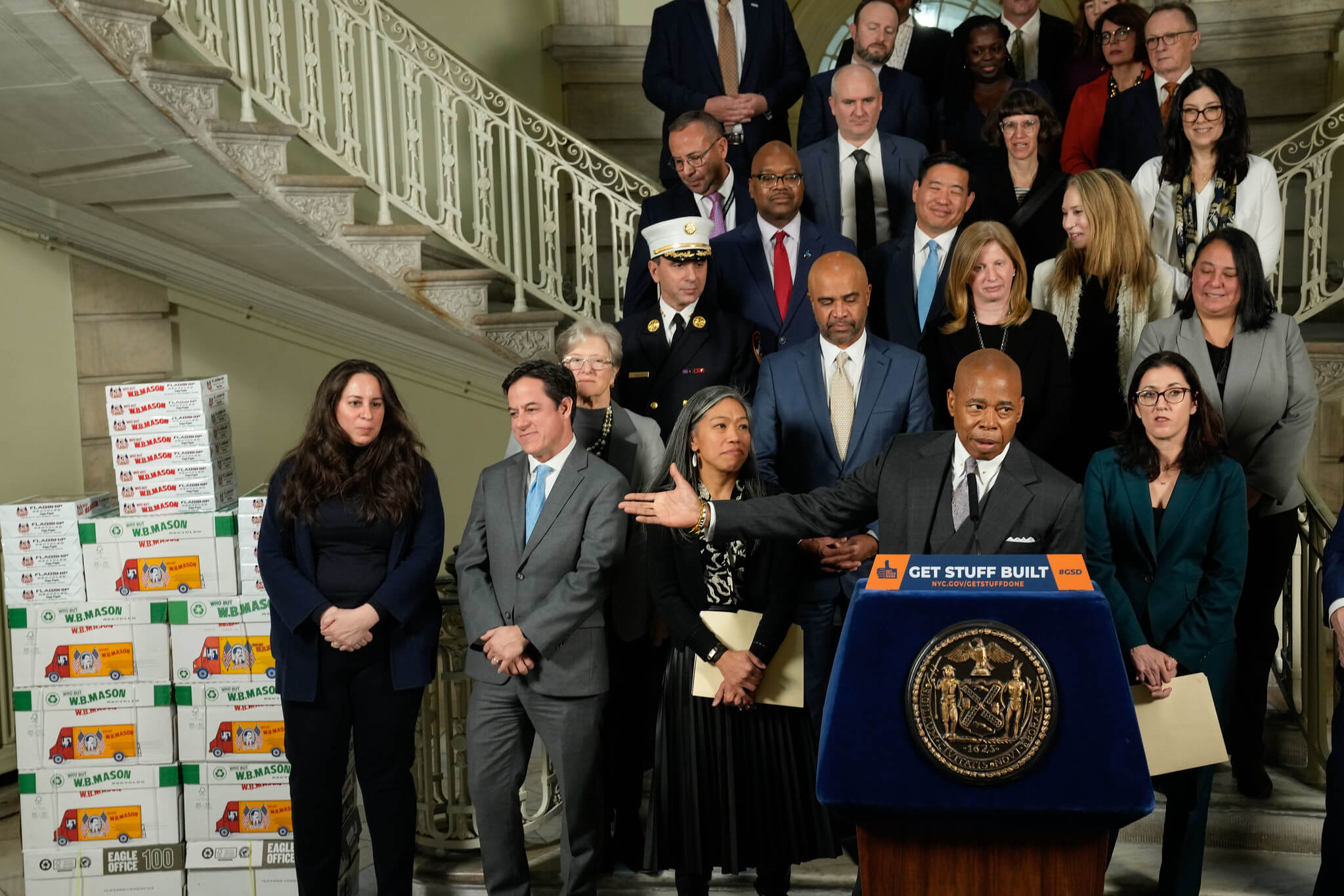
Two areas the plan focuses on for speeding up development are shortening the pre-certification period that takes place before the Uniform Land Use Review Procedure (ULURP), which most projects must go through, and eliminating environmental reviews for proposals under 200 units. Those changes, however, can’t be made without legislation from both the City Council and Albany.
Shortly after the mayor unveiled his plan, the council released its own land use guidelines and housing agenda, which focused on increasing community engagement, deepening affordability levels in each project and making sure developments are spread throughout every neighborhood across the city – all of which could lengthen rather than condense the development process.
The mayor’s and the council’s approaches to building more housing may come into conflict with each other, Smikle said, as the mayor has to balance keeping a tax base in the city with building more affordable units, while the council can simply focus on the social equity angle of housing.
“He’s trying to think out of the box to make sure that there’s affordable housing in the city, but also keep a good tax base here and make sure that businesses feel like they can set up shop here,” he said. “I think the council is looking at it from a longer social justice lens, which at times will come into odds with his plans.”
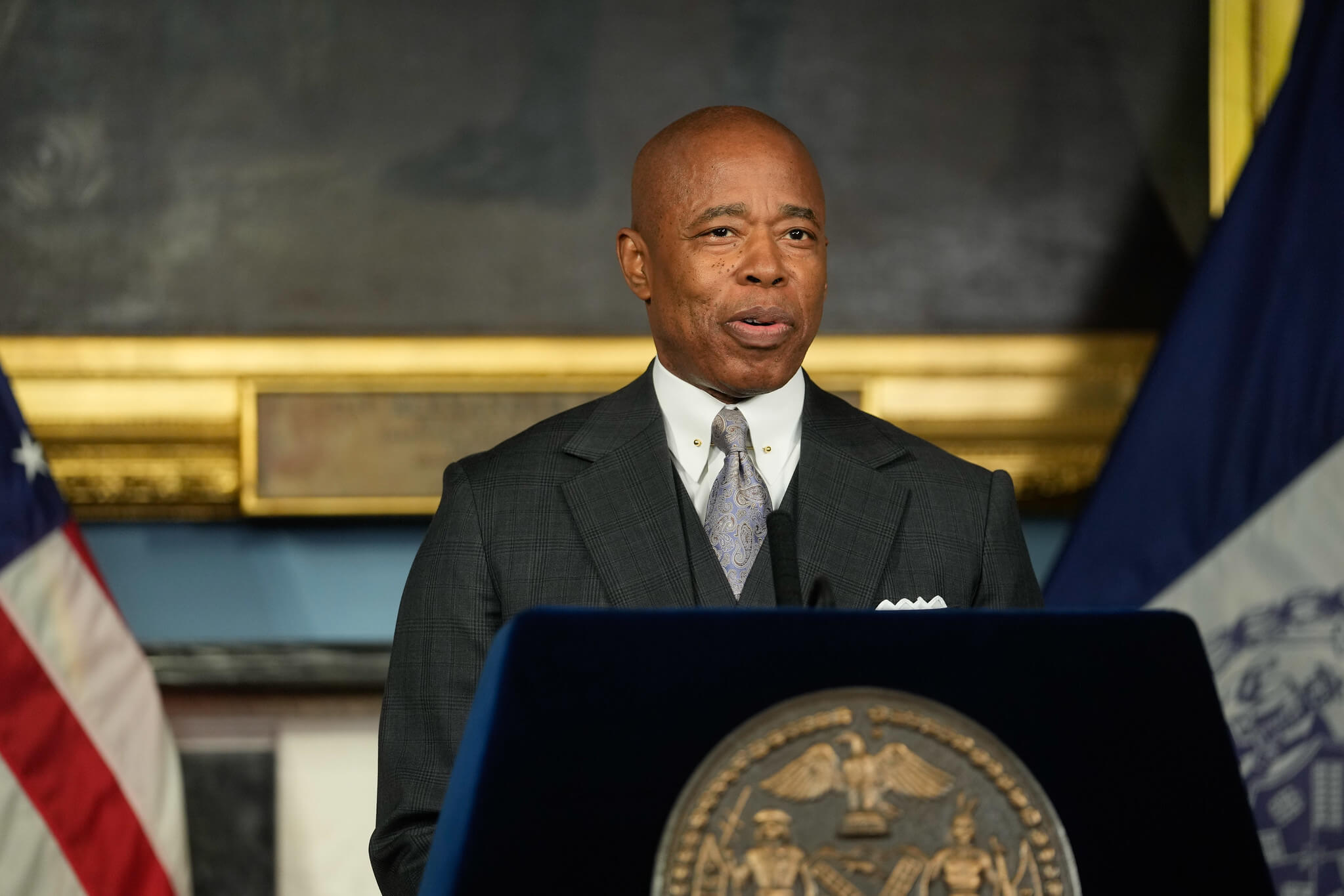
For his part, Adams said he was able to find common ground with the council to pass several large developments this year, including: the Innovation QNS in Astoria, Queens; the Bruckner Boulevard rezoning in the east Bronx; and Innovation Urban Village in East New York.
“We got the Innovation project done in Queens. Many people said it was impossible, we got it done because of the help of [Council Speaker] Adrienne Adams,” Mayor Adams said. “We got the Bruckner project done. People said it could not be done, we got the City Council to come along with us. And so, yes, there are areas we disagree, but how about looking at the areas we agree on, and the successes that we’ve had with our lawmakers in Albany and our lawmakers here.”



